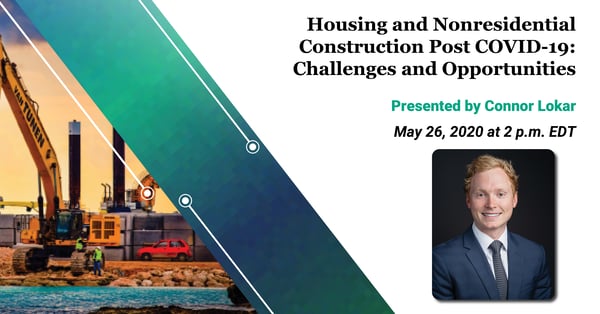The US and global economic cycle was upended as a result of multiple black swan events including COVID-19, crashing and unprofitable oil pricing, and unprecedented state and local government intervention via stay-at-home orders. At ITR, we made an exhaustive review of all our forecasts, and these developments have negatively affected the majority of them to varying degrees, as would be expected.
The question is, "What does this mean for US construction activity this year and beyond?"
In this webinar, we will guide you through what we know so far regarding the aforementioned black swan events and their impact on US construction activity. Some trends, such as residential housing starts and other aspects of construction, have not been severely impacted. The same is true for hardware and building supply dealers. Construction is apparently considered an “exempt” industry in most of the states that have forced businesses to close – as are many manufacturers and distributors, we are finding out. While this should mitigate the early effects of some of the government intervention, the associated damage to the macroeconomy at large will linger on over the construction sector.
We see that housing typically leads the way, and, so far, housing is standing tall in the face of these trends. We anticipate the residential market will perform relatively well during 2020.
Unlike the housing market, nonresidential construction does not "lead the way." In our analysis at ITR Economics, we find that nonresidential activity often lags not only housing but also the general economy. Thus, the outlook for this segment of the construction market is very different than for housing, as the economic shocks we have felt to this point will linger over nonresidential construction well into 2021. We will take a deeper dive into understanding which leading indicators provide foresight into the nonresidential segment. We will also highlight vertical markets likely to provide greater growth opportunities or danger in the future.
Connor Lokar
Economist
